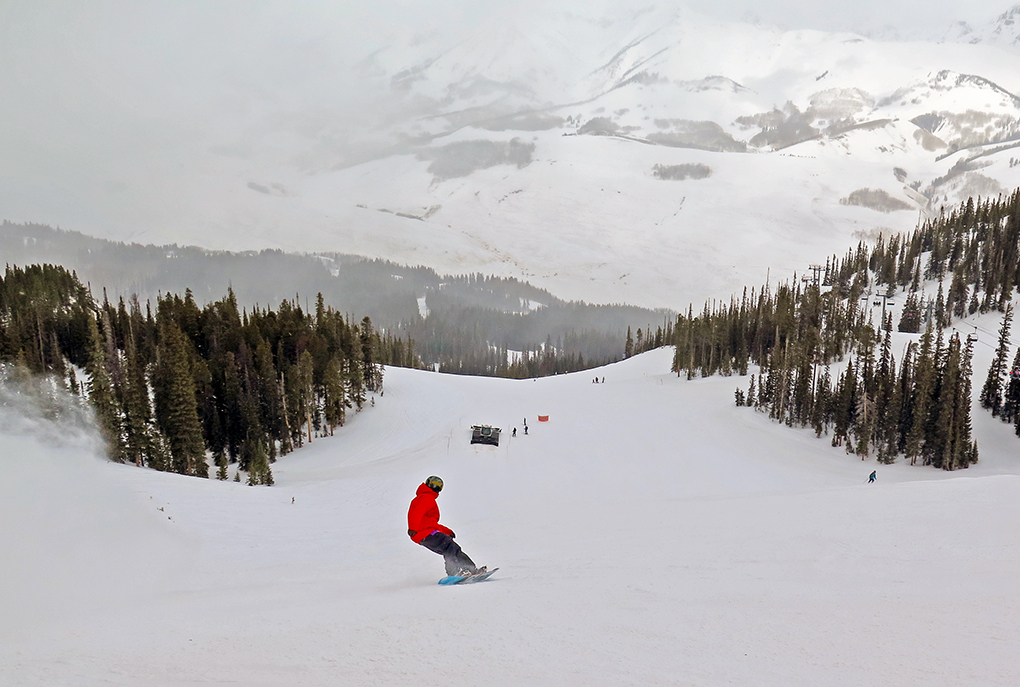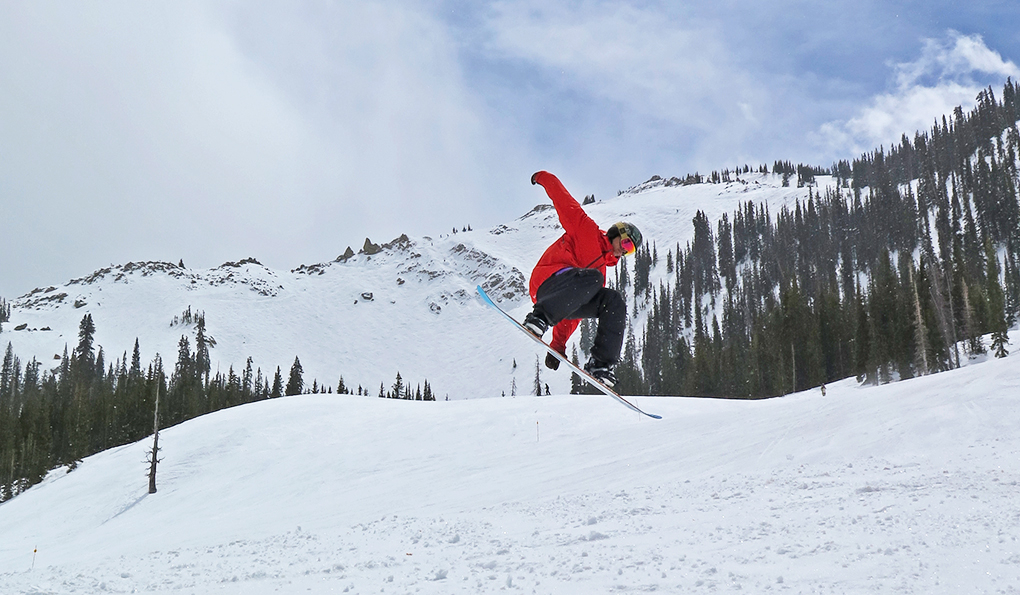
First Look: 2014-2015 Amplid Creamer, 162cm
Dimensions:
Waist width: 251 mm
Sidecut depth: 22.5 mm
Nose width: 298 mm
Tail width: 296 mm
Sidecut radius: 8.2m
Reference stance: 2 cm set back, 590 mm (23.22 inches)
Stance range: 550 mm-630 mm (21.6-24.8 inches)
Features:
- 6.6 Sintruded HiMolekular Base
- Stomp Guard Tech (titanal)
- PLT Gloss UV coating
Reviewer: 6’2, 165 lbs.
Boots / Bindings: K2 Ender / 2012 Burton Cartel
Stance: 23.5”, centered on inserts, 15°/-12°
Test Location: Crested Butte, Colorado
Days Tested: 2
In 2005, pro rider Peter Bauer left Burton and founded Amplid, a European-based company that makes skis and snowboards. Since then, Amplid has expanded into the North American market.
Amplid describes the Creamer as a directional all-mountain and backcountry board that can carve as well as it floats. For the 2014-2015 season, Amplid redesigned the Creamer, giving it a new rocker profile. The updated model still maintains its directional shape and ability to float, but was intended to provide more stability. So the Creamer seemed like a great board for riding technical lines and big bowls.
Design
Amplid claims that the Creamer is a freeride board that is built equally for powder and carving on firmer snow. And after looking at the board’s specs and camber profile, Amplid’s description seems pretty accurate.
My biggest issue with most powder-specific boards that have more rocker and taper in the nose and tail is that they tend to be unstable on hardpack, which can often make getting back to the lift scary. While these heavily tapered, reverse cambered swallowtails work really well in fresh, untracked snow, I generally prefer a more versatile powder board that I can crack ollies with and still have fun after the resort gets tracked out.

Amplid seems to have taken this into consideration when designing the Creamer. The Creamer uses Amplid’s PowRocker profile, which is flat from the tail to the front insert, with a small amount of rocker in the nose. Although Amplid calls the board flat, it actually has 4mm of camber along its running length, which is still a pretty subtle amount compared to boards that have a more dramatic camber profile.
The flatter design underfoot should help to improve the board’s carving capabilities and provide some snap in the tail, while the subtle rocker in the nose still offers some flotation. Compared to more traditional powder boards that can have more than 2cm of early rise on the nose, the rocker on the nose of the Creamer is pretty minimal.
The Creamer has a long sidecut radius of 8.2 meters, with a basically nonexistent taper—the nose is only 2mm wider than the tail.
Hardpack
After making some initial turns off the top of the Silver Queen lift at Crested Butte, I was impressed by how well the Creamer carved, and it certainly felt like a directional, big mountain board. The Creamer has a stiff flex from the tail to the front inserts, with a slightly softer nose, which allowed me to ride it fast down hardpack.
Since the rocker in the nose is pretty subtle, the Creamer’s contact points behave much like a cambered board; turn initiation was precise, and the board gripped the snow well. The long sidecut radius was definitely noticeable when carving, and the Creamer preferred to make fast, large-radius turns. At faster speeds, the Creamer felt smooth, and I never noticed any hooky behavior.
The board wasn’t as comfortable, though, making shorter, slow carves. The Creamer was a really fun board for groomers and high-speed wall hits around Crested Butte.
Variable Off-Piste
The days I spent at Crested Butte offered a wide range of variable conditions: wind, sun, and 6 inches of new snow resulted in everything from windblown powder, to dust-on-crust, to baked corn.
Off-piste, the Creamer felt similar to other burly, big-mountain boards I’ve ridden, and with such variable conditions, I really appreciated the board’s stability. However, big-mountain boards like the Rossignol XV and the Jones Flagship are a bit more stable than the Creamer. The Creamer handled challenging snow well, and the slightly rockered, but fairly stiff nose helped me plow through 4-5 inches of chop without getting bucked.

Even though Amplid claims that the Creamer has a “moderately tapered geometry,” it didn’t ride like a tapered board. The taper is essentially unnoticeable, as it’s surprisingly comfortable while riding switch, and doesn’t have any characteristics of a pintail.
Some wind-loaded areas around Crested Butte had up to 8 inches of fresh snow, and the Creamer excelled in those conditions. It floated really well, but was burly enough to stay stable when bottoming out in dust-on-crust conditions.
The Creamer is not the most maneuverable board in tight trees or in other areas where I had to make quick turns, which is unsurprising given the board’s sidecut dimensions and heavy swing weight. The Creamer would be the most fun riding through open pow fields, pinning lines over Hokkaido trees, or straight-lining long, tight chutes.
Bottom Line
The Amplid Creamer is a versatile, all-mountain freeride board that excels in both fresh snow and firmer chop when stability is most important. It floats well in powder, but is still directional and stiff enough to carve and charge big lines.
